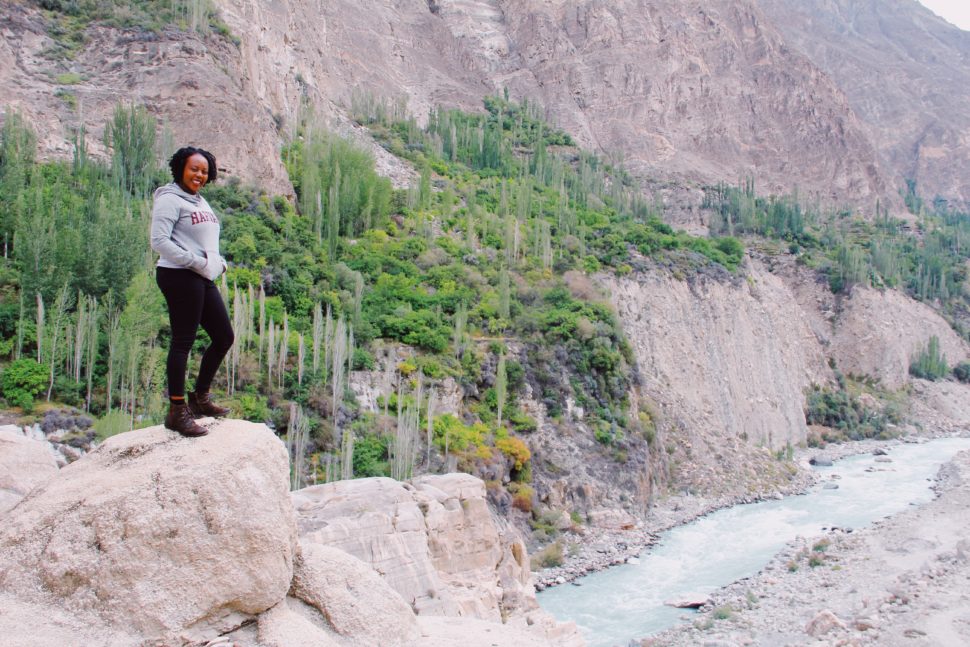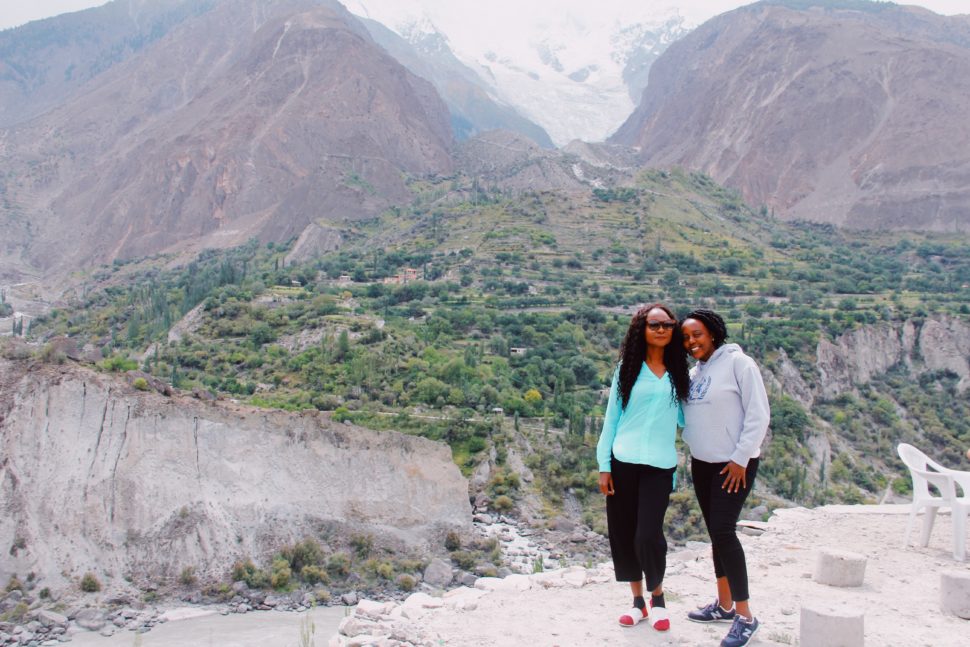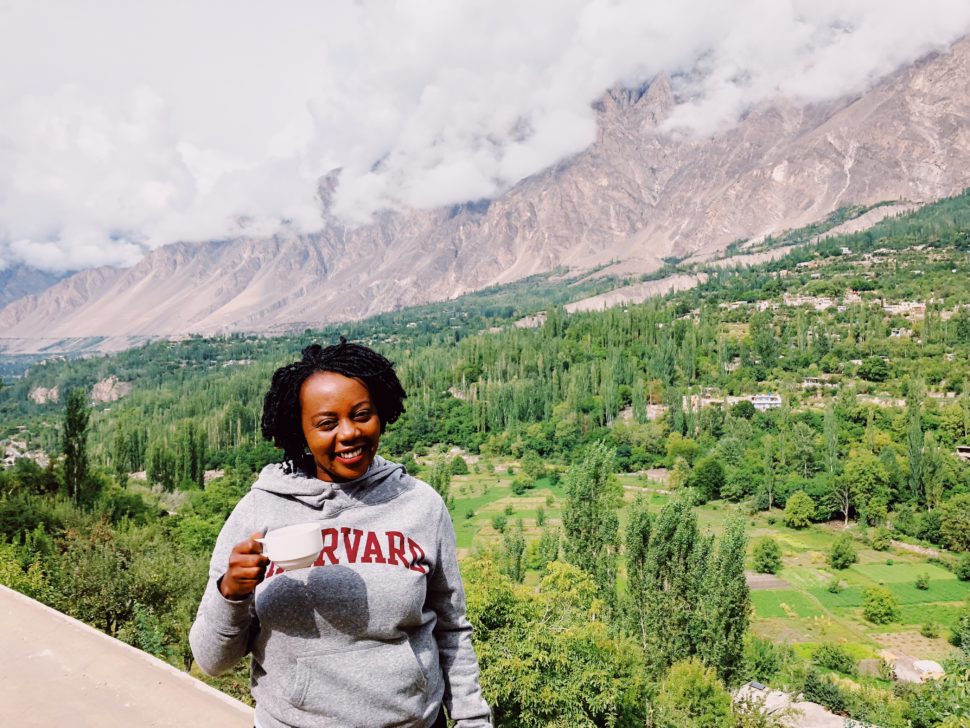There is a reason why Pakistan has shot up the bucket list for off-the-beaten road travel and earned a place on the list of 10 cool places to visit in 2019 according to Forbes. This is owing to its scenic views comprised of historic relics, unmatched greenery, out-of-this-world mountains and glaciers, and deeply alluring lakes. Home to some of the world’s highest peaks including K2, the second tallest mountain after Everest, Pakistan makes for an ardent hiker’s dream.
While Pakistan is often portrayed as an unsafe place to visit, most of the country, especially its northern parts are relatively safe.
It goes without saying that there aren’t that many black people visiting Pakistan. It is common to have people stare and you become something of a spectacle or a celebrity, given the number of selfies you get asked to pose for. That said, locals are incredibly friendly and hospitable, and are mostly curious about other cultures and equally eager to give you a hint into their culture and heritage.
After months of careful preparation, we spent 3 days exploring Pakistan’s breathtaking Hunza valley, located in Pakistan’s border region with China.
Our adventure began with a female captained flight from the capital city Islamabad to the northern Gilgit Baltistan region. All the more memorable because of the surge of adrenaline we felt flying intimidatingly close to some of the world’s mightiest peaks.
These are our 10 top reasons why the adventurous black traveler should consider visiting Pakistan’s Hunza Valley:
1. If you are craving the ultimate road trip, you’re already off to a good start. The drive right from the airport in Gilgit to Hunza Valley on the Karokaram Highway, that connects Pakistan to China is lined with breathtaking landscapes. Note- it is worth hiring a local guide for the trip unless you are the typical daredevil traveler i.e. map, campus, and hope in hand, as the local’s in-depth knowledge of the area is unparalleled and will help you save time to explore.
2. For those with an addiction for technology, Hunza is the best place for a digital detox as WIFI is not dependable – downright nonexistent which explains why the WIFI password in one of the lodges is ‘talktoeachother.’
3. To learn more about the history of the valley and its royal family, who still live in the area, visit its two forts. At Baltit fort, do not forget to meet the famous security guard with an “unbeatable mustache” tucked behind his ears and remember to ask him how long it is. On a good day, the breathtaking views from Altit fort will blow you away as the glacial water of the Hunza river rushes dramatically and speedily at the foot of the fort. The saying goes that the glacial water of the Hunza river is “good for nothing” as in most cases, it is undrinkable.
4. Stop by the sacred rocks otherwise known as Haldeikish, for an unbeatable view of mountain peaks, and catch the confluence of the Hunza and Gilgit rivers joining to form the Indus River.
5. Taking a boat ride on the tranquil Attabad lake is hands- down one of the highlights of a trip to Hunza. Created in 2010 following a landslide, Attabad lake can only be described as unexpected. A surreal eye trick, given the contrast of its striking turquoise color set against the dark mountains that surround it.
6. Literally, swing by Hussaini bridge for another spectacular view of the surrounding peaks which form the perfect backdrop for dare and audacity. Standing on the suspension bridge gives you the impression that you are moving along with the rushing water below. In one word, exhilarating!
7. You will undoubtedly be mesmerized by the view of the Passu Glacier which appears to be floating between fantasy and reality. From a distance, the glacier is as intimidating as it is dramatic. Its magnificent cones are also known as the cathedral owing to their semblance to the Gaudi’s Sagrada in Barcelona.
8. Take a hair-raising drive up to Eagle’s Nest café which is among Hunza’s accessible high points. The road there is narrow and rickety and can only be accomplished with the skills of an experienced rally or a local tour driver. The uphill journey takes 15-20 minutes from the city center. A bit scary for those with a fear of heights, but the panoramic view of the seven peaks that awaits you at the top makes it well worth it.
9. A trip to Hunza is not complete without strolling around its main Karimabad market for souvenirs including locally made handicrafts. The women of Hunza are resilient and emancipated, defying the gender inequality stereotype in other parts of Pakistan. Be sure to visit the women-run carpentry shop, as well as the facility where mentally challenged women weave beautiful carpets. Another carpet facility worth visiting is found slightly out of town in Gulmit where women weave handmade carpets in an old house that is over a hundred years old.
10. The wonders of Hunza culminate in Pakistan International Air’s famed ‘air mountain safari’ where the pilots eloquently explain the features of the mountains while at the same time allowing passengers to take turns in the cockpit to get an up-close view of the Himalayas, Hindu Kush, and Karakoram mountains.
Essential information on traveling to Hunza
There are daily direct flights to Pakistan’s capital Islamabad from several European cities or connecting through the Gulf. Pakistan International Airways flies daily from Islamabad to Gilgit Baltistan, a 2- hour drive to Hunza.
You need a tourist visit to travel to Pakistan which you have to get in advance from a Pakistani embassy.
There aren’t that many places to stay in Hunza, you would hence need to book early. We recommend the Mountain Stories, a quaint cozy eco-lodge that is very rustique yet comfortable surrounded by dramatic mountains and greenery – think lost in the wild.
You will be spoilt for choice on restaurants offering decadent local dishes.
The best time to visit is from April to October as flights are frequently canceled during the winter and most lodges are closed.
This post was written by Belinda Chanda and Gloria Lihemo.
Belinda Chanda currently resides in Pakistan’s capital, Islamabad. A Zambian national with a curiosity for new places and shared adventures.
Gloria Lihemo is Kenyan and currently lives in Pakistan and travels frequently for work and pleasure.
Want to share your travel story? Check out our community submission form HERE.



